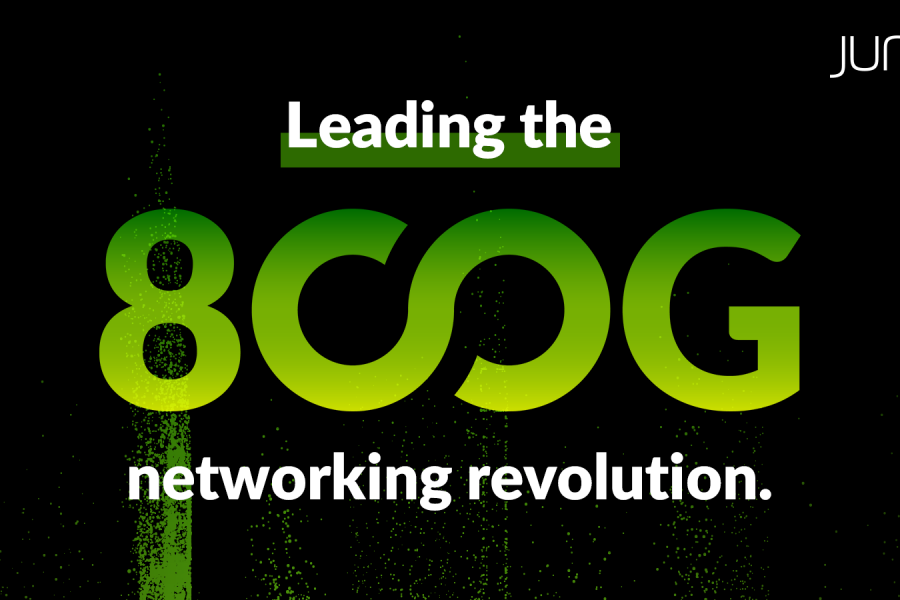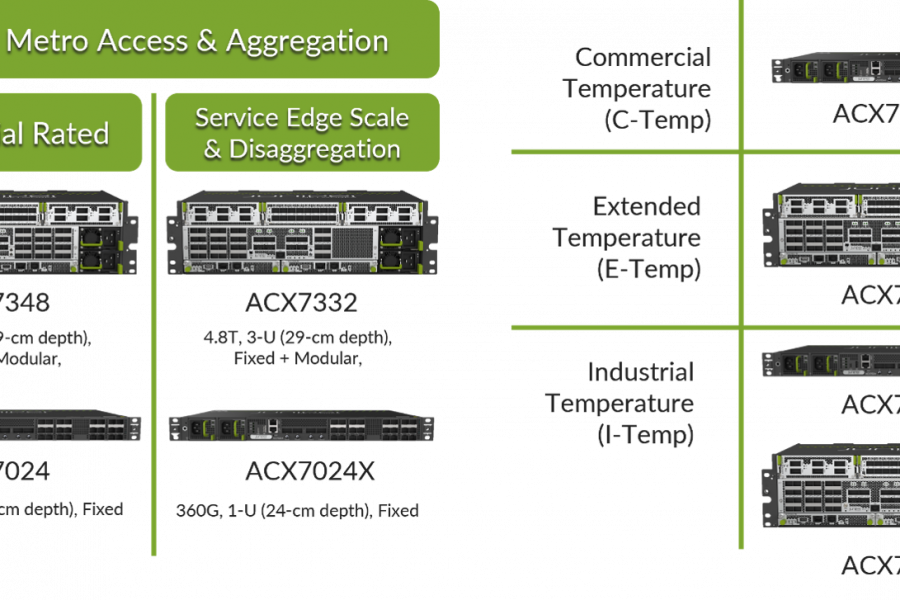Large network operators don’t need to be psychic to see the future. With the rise of 5G, new connected devices, immersive video, gaming applications and more, they can expect constantly growing demand for more capacity and better performance. Mobile IP traffic alone is expected to increase by 3-4.5x between 2020 and 2026.[1]
Simply throwing bandwidth at this problem isn’t a viable long-term strategy. Operators need to reduce incremental CapEx by wringing more capacity from their transport infrastructure, and meet stringent service-level agreements (SLAs) and deliver differentiated service experience while reducing operating expenses (OpEx).
There’s a straightforward solution to this dilemma: automating and optimizing the transport network. Modern, controller-based Software-Defined Networking (SDN) solutions can dramatically optimize network resiliency and utilization—avoiding millions in avoided CapEx costs, while actually improving performance and reliability, thus enabling more diverse and demanding SLAs. The solution ensures that the network can dynamically adapt to changing conditions and customer requirements based on real-time data from across the infrastructure. We demonstrated this at a recent Tech Field Day event, you can see all of the videos here:
- The Autonomous Network: Key Success Factors
- Demonstrating Congestion Avoidance with Paragon Automation
- Demonstrating Low Latency Routing and Path Diversity with Paragon Automation
Of course, some operators still have questions about autonomous networks. Should they be comfortable handing over traffic control to an automated Path Computation Element (PCE)? And are network automation solutions really mature enough to deliver on their promise? The answer is yes—provided that operators are working with the right partner. Since Juniper Networks unveiled its expanded Paragon™ Automation suite in 2021, hundreds of operators have put the SDN-based network automation and optimization capability to the test.
The experiences of these operators, along with commentary from multiple independent analysts and experts, all bring us to the same conclusion: transport network automation isn’t just an interesting idea for the future. Paragon Automation can deliver concrete results right now.
The Case for Automation
Operators of large service providers and enterprise networks face an urgent need to improve network utilization and resiliency, optimize CapEx and reduce OpEx. Most also agree on the solution: implementing SDN-based traffic engineering intelligence and enabling closed-loop automation across critical network domains. According to a recent survey by Heavy Reading (Figure 1 below), operators are racing to implement SDN for IP/MPLS transport networks, with traffic engineering the most cited use case in this domain as a target for automation within the next two years.
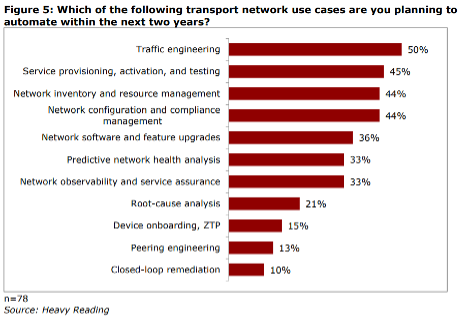
Yet some operators still have reservations about turning over traffic engineering to an automated SDN controller. Vendors have been talking up automation for years, but operators don’t want to deploy a science project that puts their network and business at risk. They also want to know that the time and resources they invest into automation will deliver an ROI—not at some point in the distant future, but right away. That’s exactly what Juniper is delivering with Paragon Automation.
Juniper already has more than 350 Paragon Automation deployments, including leading operators like Orange Poland, TalkTalk, DQE Communications and Consortium GARR, with more joining every month. In many cases, these operators struggled for years with homegrown automation platforms and vendor-proprietary tools. With Paragon Automation, they’ve found multi-vendor, cloud-native SDN and traffic engineering solutions that actually work.
But don’t just take our word for it. An independent analysis from ACG Research found that optimizing capacity with Paragon Automation delivers an overall TCO savings of 27% compared to “brute-force” capacity increases. Or, see this recent solution profile from Appledore Research: “The growing number of significant recent wins in the CSP market show growing momentum, and satisfied customers. We believe that the approaches taken within Paragon are solid, and in keeping with the direction that the industry is moving, and moreover, must go in the near future. Automation is essential. Paragon is built around automation and deserves attention.”
Inside Paragon Automation
Juniper’s Paragon Automation portfolio (Figure 2 below) features a suite of intelligent, pre-integrated solutions that enable closed-loop automation and optimize network planning and operations.
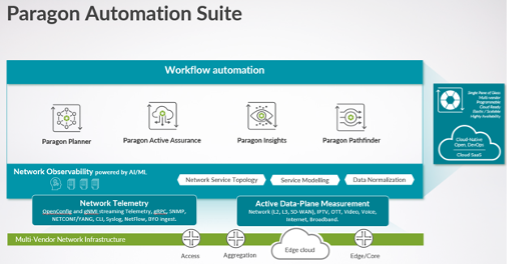
These solutions provide:
- A proven, centralized cloud-native controller to simplify and optimize traffic engineering by automating network path design, provisioning and management
- A complete network observability stack that enables smarter automated traffic engineering and simpler operations via real-time, end-to-end views of network topology and traffic
- The ability to turbocharge closed-loop automation by combining traditional telemetry with Paragon Active Assurance—testing quality directly on the data plane, using the network itself as a sensor—to optimize real-time and proactive reprogramming of the network
Unlike other network automation solutions, Paragon Automation is:
- Intent-based, drawing on Juniper’s exhaustive knowledge and experience from decades working in the world’s largest transport networks
- Multi-vendor, using standards-based interfaces and models to support almost any vendor’s devices and NMS, across both IP and optical domains
- Flexible and cloud-native, available on-prem or as a cloud-hosted as-a-service (aaS) solution
- Proven automation technology, not a science project or custom engagement
In fact, in EANTC’s 2022 MPLS SDN interoperability testing, Paragon automated multiple widely deployed third-party routers in Tier-1 and Tier-2 networks (Figure 3 below).
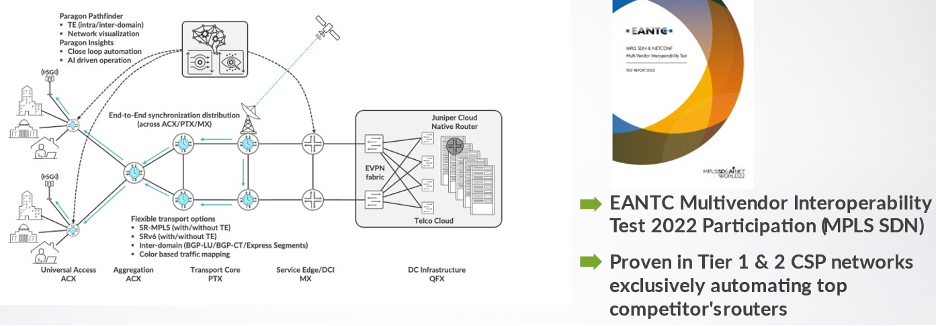
A Use Case-Driven Solution
As operators quickly realize, Paragon Automation solutions aren’t merely designed for “automation” in the abstract. They’re prebuilt and optimized for specific use cases that deliver results right away. Examples include:
- Autonomous Capacity Optimization: Stop massively overprovisioning links to ensure resiliency. By intelligently rerouting traffic in response to changing conditions, Paragon Pathfinder delivers up to 30% more capacity utilization with the same or better quality of experience compared to brute-force approaches.
- Latency-Based Routing: Provide differentiated service experiences with the ability to deliver precise latencies for specific services and customers. Paragon uses real-time network telemetry to automatically place traffic on the optimal path to meet SLA requirements, with little or no human intervention.
- Closed-Loop Remediation: Maintain true end-to-end network visibility with automated active testing on the data plane to detect customer-impacting issues and verify newly provisioned paths, links and services. Paragon triggers automated re-routing around problematic links, all without human intervention.
The Market Has Taken Notice
Curious about closed-loop automation but skeptical of ambitious technology claims? Here’s what third-party analysts are saying:
“[Paragon Automation] enables operation teams to manage strict transport SLAs more efficiently and dynamically through automated planning, provisioning, proactive monitoring and optimization of large traffic loads based on user-defined constraints. With this automation, operators can run their networks with higher utilization while achieving predictability, resiliency, and SLA guarantees… Our study shows that Paragon Automation can help operators increase average link utilization from 50% to 70% or higher.”
—Peter Fetterolf, PhD, ACG Research“Paragon Automation ticks all our operational and technology ‘best practices’ boxes. It provides automation in both of lifecycle phases, and also manages automation across layers (L1-3) within transport. It supports multiple vendors both natively and through adaptation to proprietary NMSes. It supports a wide range of both open and standards-based interfaces and APIs. Finally, it uses a modern software design (microservices-based, CI/CD operations, reference data-driven, etc.) that is highly configurable and adaptable moving forward.”
—Grant Lenahan, Appledore Research
Juniper also recently participated in a Tech Field Day, where we demonstrated a pre-integrated Paragon Automation framework in a core MPLS network supporting L2/L3 services (Figure 4 below).
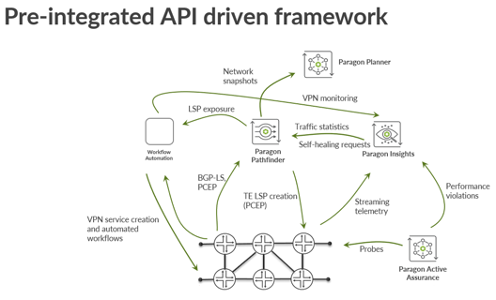
Participants—including some of the industry’s premier network experts and advisors —were just as impressed.
“It should not be understated how operationally powerful and critical path re-route is in a large, overlay based provider or data center interconnect network. It can mean the difference between millions of dollars lost, SLAs violated, unhappy customers, and productive packets seamlessly moving across another path… Juniper Networks’ Paragon Pathfinder fills a unique and much-needed void in automating, and thereby taming, that dark art of traffic engineering.”
–Nick Buraglio, Network Planning Architect and Board Advisor
“The Paragon Automation Suite offers plenty of benefits and features that could help service providers provision, monitor, manage and optimize services. It addresses several common pain points providers suffer nowadays, such as manual tasks, service deployment, monitoring, activation, testing and optimization, network observability, trend analysis and multi-vendor real estate.”
— David Penaloza Seijas, Principal Engineer, Verizon Enterprise Solutions
“Managing a dynamic MPLS network presents operators with multiple challenges. Making changes and adding services while also monitoring traffic levels and performance require more than just device and protocol level knowledge in the network. Centralized controllers like Paragon Pathfinder provide that system-wide view and control to react as changes are required.”
Start Your Network Automation Journey
Want to learn more about how end-to-end transport network automation can help you lower costs and capitalize on new opportunities? You can find analyst reports, executive blogs, live demo recordings, data sheets and more here.
[1] Ericsson Mobility Report 2022

